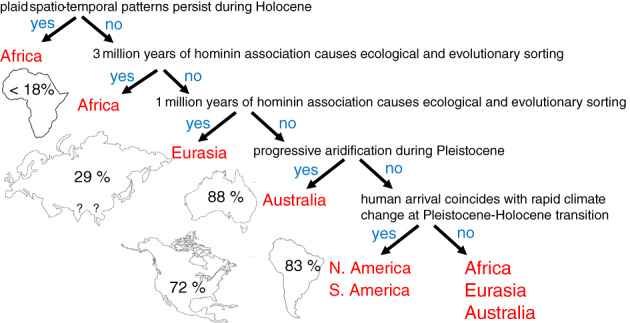Figure 15.

Late Quaternary extinctions on the continents resulted from conspiring processes whose roles varied according to geography and time. Percentages of megafaunal genera going extinct are shown within each continent's outline. On many continents, the transition from plaid to striped landscapes may have been basal within a hierarchy of extinction causes that included other kinds of climate‐change impacts and the impacts of human activities. The fewest extinctions occurred in the drylands of Africa because the spatio‐temporal fabric remained largely plaid throughout the Holocene, and possibly because its megafaunal ecosystems had lengthy prior exposure to hominins. Progressive aridification in Australia may have trumped the favourable effects of the ice‐age plaid for megafauna, causing extinctions there to be early and – after human arrival – to be severe. Multiple extinction drivers intersected in the Americas when initial human impacts coincided with the conversion from plaid to striped landscapes.
